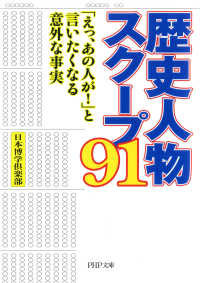基本説明
Written for undergraduate and graduate students who are willing to get acquainted with Bayesian approach to computational science but not necessarily to go through the full immerson into the statistical analysis.
Full Description
The book of nature, according to Galilei, is written in the language of mat- matics. The nature of mathematics is being exact, and its exactness is und- lined by the formalism used by mathematicians to write it. This formalism, characterized by theorems and proofs, and syncopated with occasional l- mas, remarks and corollaries, is so deeply ingrained that mathematicians feel uncomfortable when the pattern is broken, to the point of giving the - pression that the attitude of mathematicians towards the way mathematics should be written is almost moralistic. There is a de?nition often quoted, "A mathematician is a person who proves theorems", and a similar, more alchemistic one, credited to Paul Erd? os, but more likely going back to Alfr' ed R' enyi,statingthat"Amathematicianisamachinethattransformsco?eeinto 1 theorems ". Therefore it seems to be the form, not the content, that char- terizes mathematics, similarly to what happens in any formal moralistic code wherein form takes precedence over content. This book is deliberately written in a very di?erent manner, without a single theorem or proof. Since morality has its subjective component, to pa- phrase Manuel Vasquez Montalban, we could call it Ten Immoral Mathemat- 2 ical Recipes . Does the lack of theorems and proofs mean that the book is more inaccurate than traditional books of mathematics? Or is it possibly just a sign of lack of co?ee? This is our ?rst open question. Exactness is an interesting concept.
Contents
Inverse problems and subjective computing.- Basic problem of statistical inference.- The praise of ignorance: randomness as lack of information.- Basic problem in numerical linear algebra.- Sampling: first encounter.- Statistically inspired preconditioners.- Conditional Gaussian densities and predictive envelopes.- More applications of the Gaussian conditioning.- Sampling: the real thing.- Wrapping up: hypermodels, dynamic priorconditioners and Bayesian learning.






